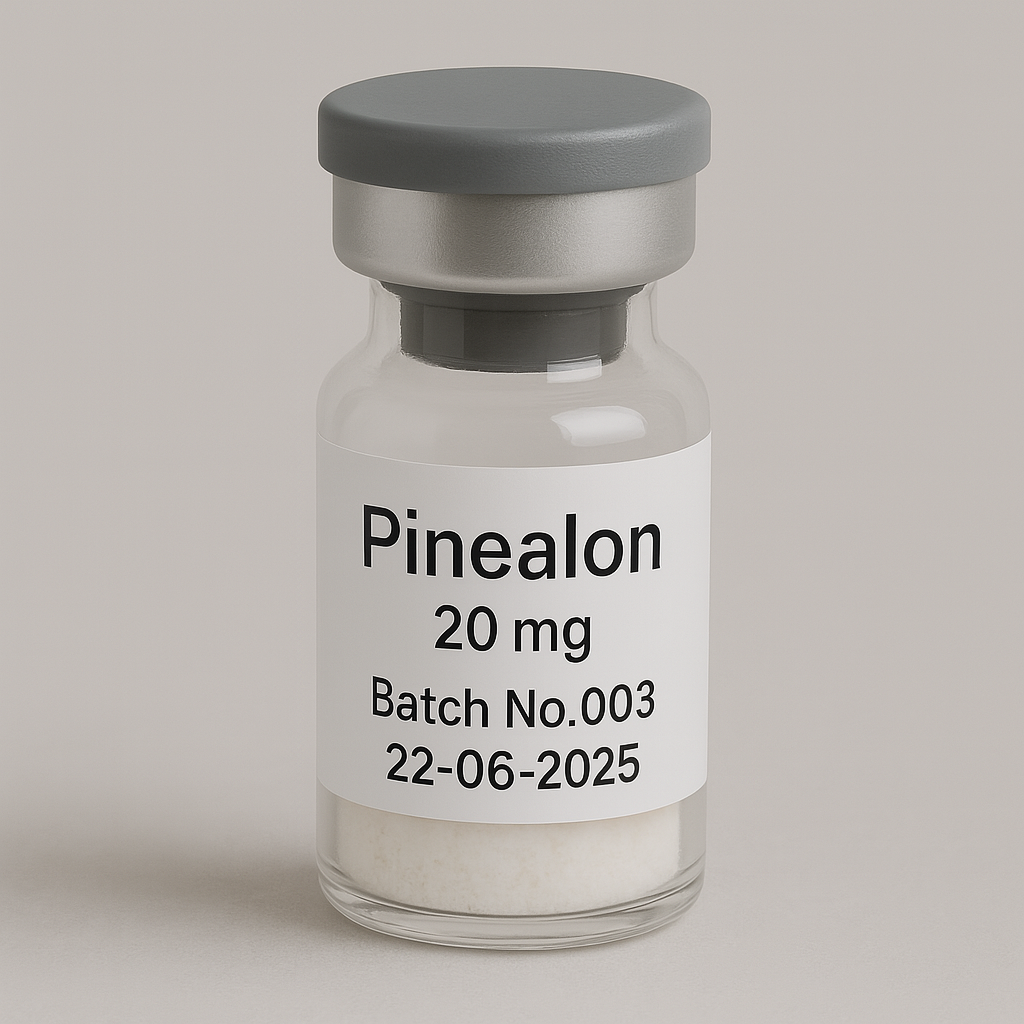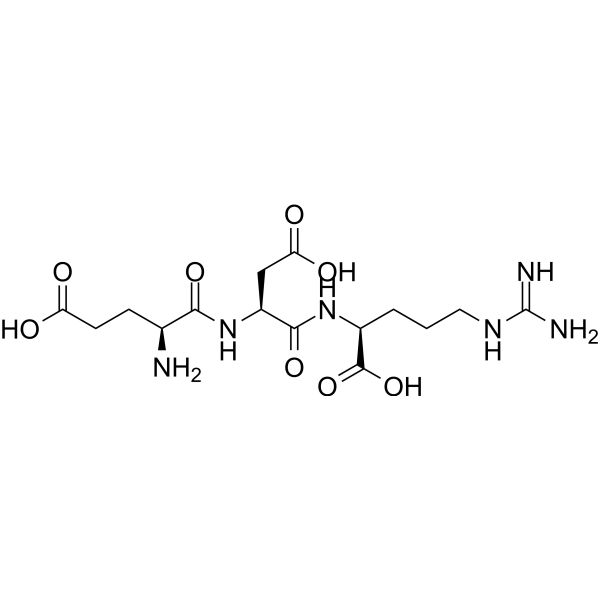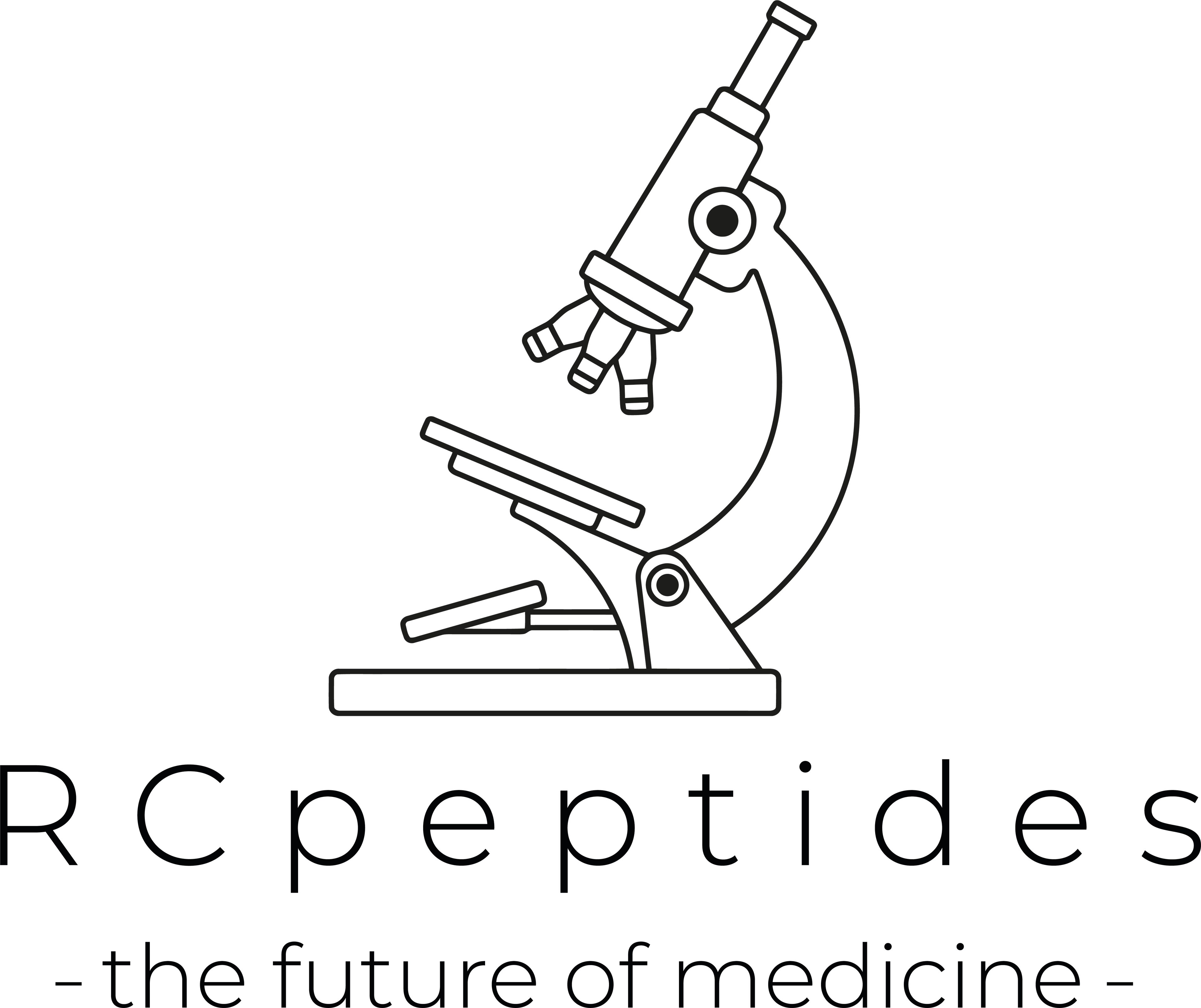
Pinealon 20mg vial
Pickup currently not available
Pinealon is a synthetic tripeptide composed of three amino acids: glutamic acid (Glu), aspartic acid (Asp), and arginine (Arg) — chemically designated as EDR. Originally developed by the St. Petersburg Institute of Bioregulation and Gerontology, Pinealon belongs to a broader class of short-chain regulatory peptides (a.k.a. peptide bioregulators) intended to support genomic stability, cellular regeneration, and neuroprotection.
Pinealon has drawn scientific interest due to its epigenetic and cytoprotective activity, particularly in neuronal tissues, making it a candidate for therapeutic use in age-related cognitive decline, brain injury, circadian dysfunction, and prenatal neurological disorders.
2. Molecular Mechanisms of Action
2.1. Epigenetic Modulation and Gene Expression
Pinealon acts at the nuclear level, influencing the expression of genes associated with brain development, memory, and stress resistance:
-
Binds to GC-rich DNA regions, potentially affecting the transcription of stress response genes.
-
Activates RNA polymerase and histone acetylation, enhancing transcriptional activity.
-
Stimulates genes related to:
-
Ribosomal biogenesis
-
Anti-apoptotic signaling (e.g., Bcl-2)
-
Neuroplasticity (e.g., BDNF pathways)
-
These effects may partially reverse age-associated gene silencing.
2.2. Mitochondrial and Antioxidant Effects
-
Reduces the intracellular accumulation of reactive oxygen species (ROS).
-
Increases superoxide dismutase (SOD) and glutathione peroxidase activity.
-
Stabilizes mitochondrial membranes, reducing depolarization and improving ATP synthesis.
This supports neuronal longevity by mitigating oxidative and metabolic stress.
2.3. Anti-apoptotic and Neuroprotective Action
-
Downregulates caspase-3 and -9, key enzymes in the apoptotic cascade.
-
Prevents DNA fragmentation and mitochondrial rupture in neuronally derived cell lines.
-
Protects against excitotoxicity, such as that seen in stroke or traumatic brain injury models.
These findings support its classification as a neuroprotective peptide.
3. Therapeutic Applications and Preclinical Evidence
3.1. Cognitive Aging and Memory Support
-
In aged rodents, chronic administration of Pinealon improved:
-
Spatial memory in the Morris water maze
-
Long-term potentiation (LTP) in hippocampal neurons
-
-
Upregulates gene expression linked to synaptic integrity and memory consolidation.
These findings suggest Pinealon as a geroprotective nootropic, potentially suitable for age-related cognitive decline or early-stage Alzheimer’s disease.
3.2. Traumatic Brain Injury (TBI) and Hypoxia
-
Pinealon reduces neuronal cell death after hypoxic or ischemic events.
-
Demonstrates improved neurological outcomes in rodent models of TBI.
-
Reduces post-injury neuroinflammation, as indicated by lower IL-1β and TNF-α expression.
This supports Pinealon’s use in acute brain injury protocols or stroke rehabilitation.
3.3. Prenatal and Perinatal Neuroprotection
-
In models of prenatal hyperhomocysteinemia (a risk factor for developmental delay), maternal administration of Pinealon:
-
Prevented structural and functional brain abnormalities in offspring.
-
Improved learning and orientation tasks in progeny.
-
Reduced markers of oxidative stress in fetal hippocampal tissue.
-
Implication: potential as a maternal neuroprotective supplement during high-risk pregnancies.
3.4. Circadian Rhythm and Sleep Disorders
-
Pinealon influences melatonin synthesis and pineal gland function.
-
Corrects behavioral abnormalities induced by circadian rhythm disruption.
-
May support sleep architecture, neurohormonal synchronization, and chronobiological health.
This suggests potential utility in sleep disorders, jet lag, and shift work maladaptation.
4. Formulation, Administration, and Dosage
-
Forms: Available in oral capsules, sublingual drops, or injectable formulations.
-
Routes of Administration: Oral for preventive health; injectable (typically intramuscular) for more intensive protocols.
-
Typical Doses:
-
Preventive/maintenance: 10–20 mg/day for 10–30 days.
-
For acute interventions: 10 mg IM daily for up to 14 days (based on preclinical models).
-
Note: Clinical dosing is not formally standardized and is often extrapolated from Russian geriatric protocols.
5. Safety and Tolerability
5.1. Toxicological Profile
-
Non-mutagenic and non-carcinogenic in long-term rodent models.
-
No observed adverse effects in chronic administration studies.
-
Safe for use in both young and elderly animals.
5.2. Human Tolerability
-
Preliminary human trials and case series (mostly from Russian medical literature) indicate:
-
No allergic or immunogenic reactions.
-
No impact on liver enzymes, renal function, or hematological profiles.
-
-
Considered safe for short-term and cyclic administration.
6. Regulatory and Commercial Status
-
Not FDA- or EMA-approved as a drug.
-
Available as a dietary supplement or research compound in select jurisdictions.
-
Included in integrative and anti-aging protocols in Russia, Ukraine, and some Eastern European countries.
-
Commercially available under names like Pinealon®, EDR peptide, or cerebral cortex peptides.
Clinicians should remain aware of jurisdictional limits and avoid therapeutic claims unless substantiated by regulatory oversight.
7. Limitations and Research Gaps
-
Lack of Phase II/III trials in Western populations
-
Limited access to raw clinical datasets (most studies published in Russian)
-
Variable bioavailability depending on formulation
-
Dosing regimens and long-term outcomes require formal validation
Despite these limitations, the preclinical and early clinical profile is strong, particularly in the context of non-invasive neuroregeneration.
8. Conclusion
Pinealon (Glu-Asp-Arg) is a scientifically intriguing tripeptide with a multifaceted neuroprotective profile. Its actions at the genomic, mitochondrial, and neurochemical levels point to promising uses in:
-
Cognitive aging
-
Brain trauma recovery
-
Prenatal neuroprotection
-
Chronobiological disorders
While robust regulatory approval is still pending, Pinealon’s unique epigenetic mechanism, antioxidant capacity, and clinical tolerability mark it as a next-generation peptide-based neurotherapeutic deserving of further international research and clinical exploration.
Key Scientific References
-
Khavinson V.K., et al. (2012). Pinealon peptide protects rat offspring from prenatal hyperhomocysteinemia.Neurochemical Research, 37(4), 823–830.
-
Trofimova S.V., et al. (2021). Pinealon peptide protects against oxidative stress-induced apoptosis in cortical neurons. Bulletin of Experimental Biology and Medicine, 172(2), 206–210.
-
Obukhova L.K., et al. (2021). Pinealon’s modulation of circadian rhythm disruption in rodents. Advances in Gerontology, 11(2), 111–119.
-
Khavinson V.K. (2013). Short peptides and gene expression in aging and longevity. Biogerontology, 14(3), 219–225.
-
ResearchGate (2011). Pinealon increases cell viability by suppressing free radical levels.https://www.researchgate.net/publication/51698801


